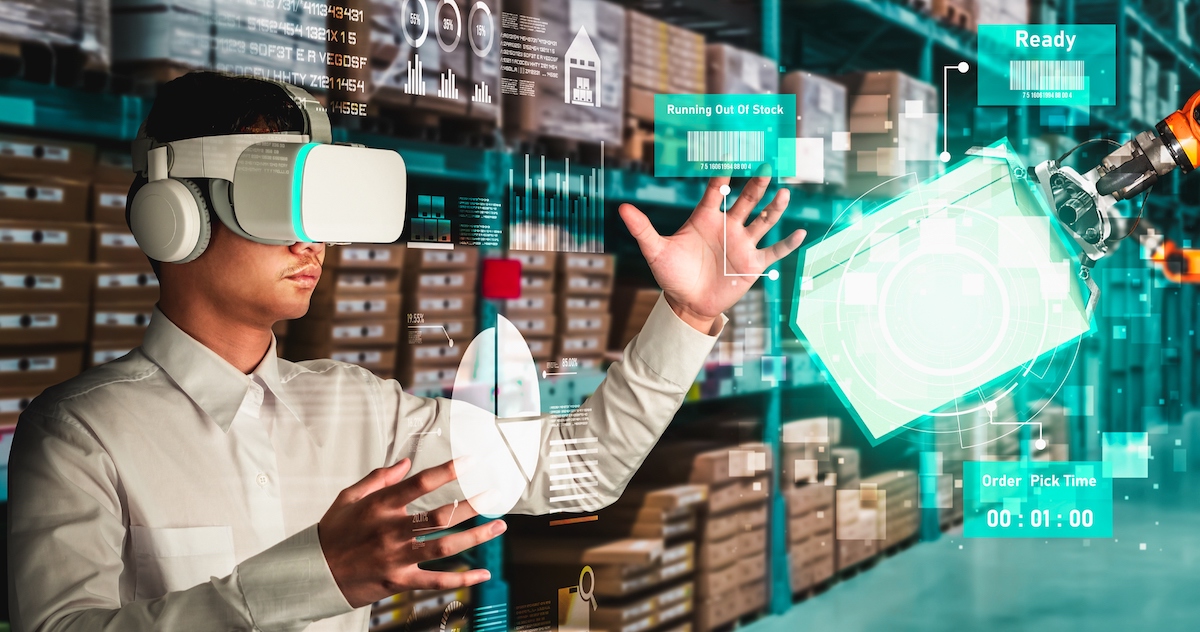Industrial Metaverse: Convergence of Physical World, Connectivity and Immersive Technology
After Facebook CEO Mark Zuckerberg popularized the concept of a metaverse during a company rebrand last year, much of the discussion about this immersive world centered on the consumer’s use of virtual and augmented reality headsets with digital representations of people and things in a network of 3D worlds focused on social connection. Often, we imagine wearing a virtual reality headset and being instantly connected to the virtual world, but somehow disconnected from the physical world. If instead we try to achieve a broader understanding of the term “Metaverse”, we could define it as the result of the continuing convergence of the physical world and the internet powered by immersive technology.
But can this method of interaction revolutionize work beyond virtual meetings? In short – it simply can’t. Even the most technically advanced processes in the industry require interaction with physical objects, no matter if they are machines, goods, or devices. For instance, frontline workers are working with their hands to repair, move or maintain real-world objects. A device like a virtual reality headset, that shuts them off from the real world, is counterproductive. The industrial metaverse requires other equipment to connect the worker with the digital and physical world at the same time.
Empowering the Worker
While the consumer-orientated metaverse digitalizes people and effectively transports them to the virtual world, the industrial metaverse digitalizes information to transfer them to the worker, empowering them by displaying relevant information or virtual objects in their field of view at the exact time they need them. This is mostly possible due the constant improvements of Augmented and Mixed Reality (AR & MR) devices like smart glasses by Vuzix and RealWear or MR headsets like the Hololens by Microsoft, which not only allow to display information, but also entire step-by-step workflows or interactive 3D holograms that are blended into the real world without obstructing the worker’s view.
Those devices enable interactions with the real world while being connected to the digital world. However, it’s the software that unlocks the full potential of the industrial metaverse for the workers by displaying real-time data from backend systems, interactive and immersive training workflows or step-by-step instructions to maintain a machine.
The use-cases for the industrial metaverse are pretty much unlimited. Every task can be improved by a hands-free access to relevant information or made more efficient by the reduction of error rates. These benefits can be realized from logistics to assembly, administration and services, training, or maintenance.
The Industrial Metaverse is Already Here
If you think that companies are already using such solutions, you are correct, at least to a certain point. Technical advanced companies and most of our customers are using those augmented or mixed reality solutions to reduce error rates and improve training experiences in different areas across their value chain. The industrial metaverse did not need to be announced, like Meta (formerly Facebook) tried with the consumer version. The industrial metaverse is already happening, it’s just not as prominent in the customer facing part of the business as it is with frontline workers in factories, logistic facilities, and training centres. The trend will be for companies to not only digitalize single processes, but their entire value chain by connecting the worker to the data that covers the whole process.
For example, if you are building a car, you will need to train your workers, manage logistics, assemble the parts, and ensure quality control. All those processes can be improved, by connecting workers in the industrial metaverse. Each worker can benefit from the data generated by colleagues in previous steps. Processes can be accelerated with live-data while training and management can be improved by evaluating the accumulated data of the processes working together.
Boosting ROI and Accelerates Innovation
We all know that innovation requires investment in time, money and resources, and those investments must yield returns. The industrial metaverse has many different aspects that factor into business decisions. Foremost, it helps to increase return on investment by reducing error rates and improving speed in training, picking or assembly. Digitalizing process will in the end lower costs while speeding up processes. But that’s not all. Considering the state of digitalization for frontline workers compared to office workers, it really is time to bring digitalization to the shopfloor.
While meetings, communication and paperwork in the office has been digitalized for years, workers in manufacturing or quality control are still equipped with printed handbooks and paperwork. Enabling your workforce to leverage the advantages of AR and MR will greatly improve ergonomics, productivity, and overall satisfaction



